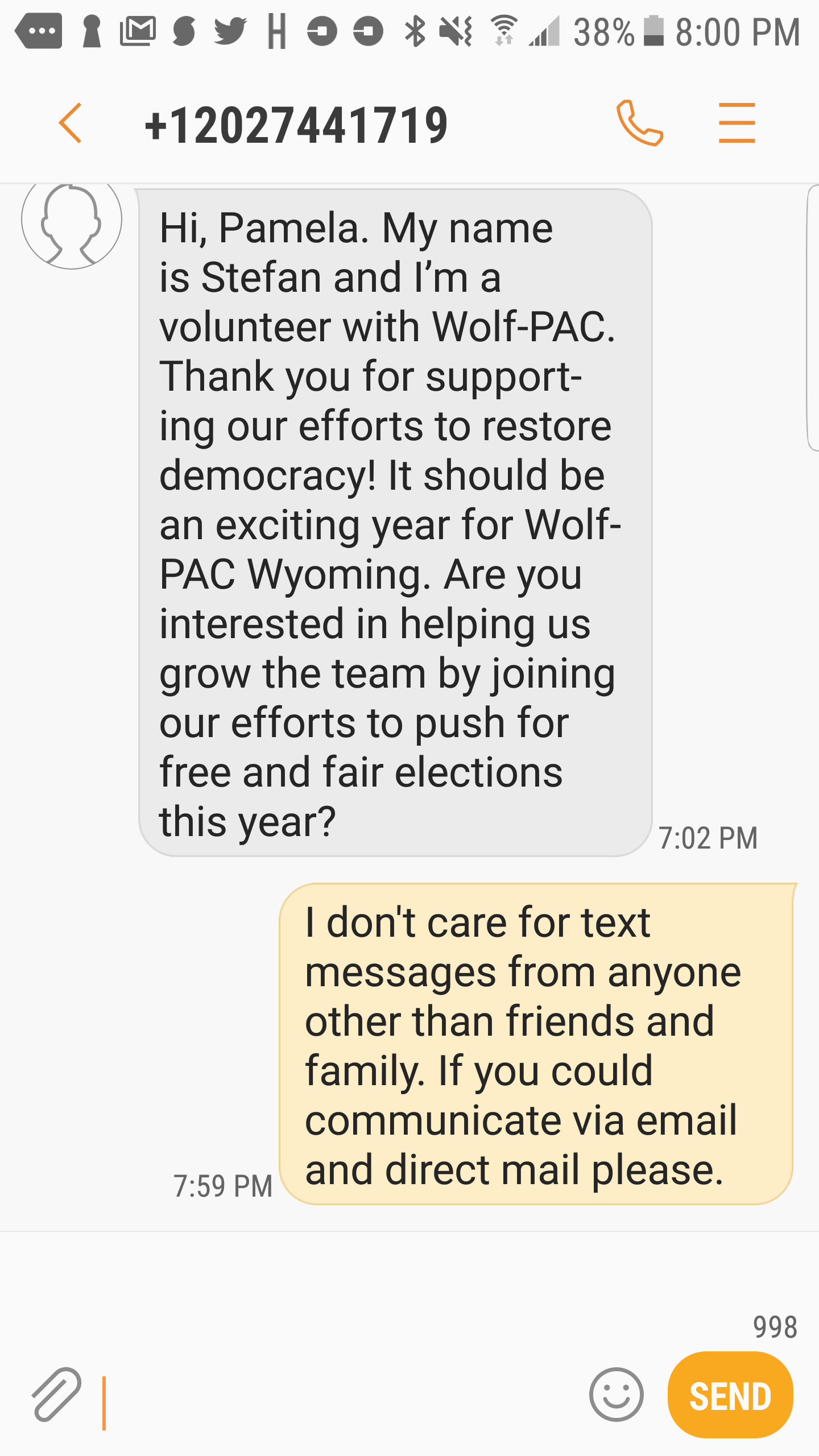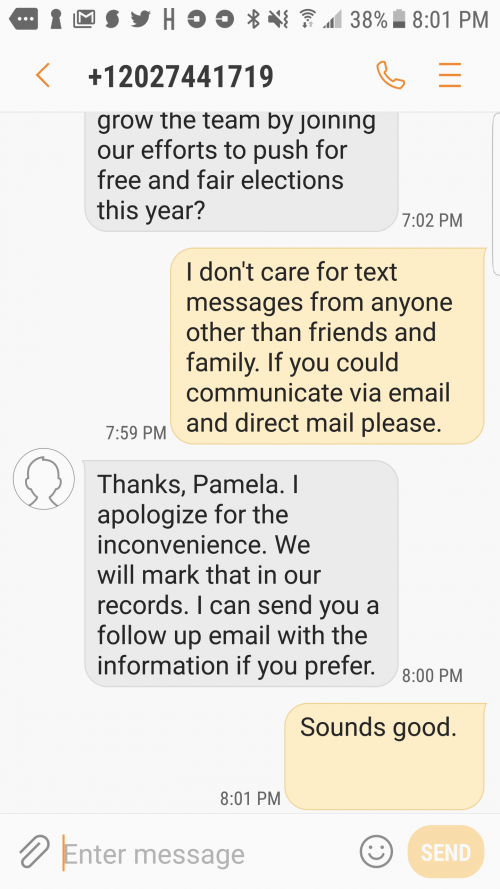
When it comes to nonprofit communications, should you communicate with your donors via text messaging, simply because you can?
It depends. On your donors. On your mission. According to MobileCause, “Millennials prefer text reminders, GenXers prefer email reminders, and Boomers prefer call reminders.”
Text messaging has the potential to mobilize engagement, especially when it comes to connecting with millennial donors. But only look to it after you’ve got your fundraising basics fully on lockdown. Is making an online gift to your nonprofit already as seamless as possible? Your site may be mobile-optimized, but is your *donate page*? What about your followup processes? What are you doing to engage that new donor?
I mentioned that text messaging appeals to millennial donors, and that’s no surprise, considering their need for speed and love of all things technological. Text messaging combines both. I am no millennial donor. Wolf-PAC (Political Action Committee), a nonpartisan organization aiming to restore integrity to political elections, recently reached out to me via text. Keep in mind that I don’t remember whether I donated, signed a petition, or both. I *do know* that I never gave Wolf-PAC permission to text me. The interaction went exactly as follows…


So what’s the moral of the story? Yes, you can take advantage of text messaging, but you better be careful with it. Despite my slight annoyance over the texting snafu, Stephan’s response was polite, considerate, and pretty much exactly what I wanted to hear at that point. Wolf-PAC is doing critical work that is especially necessary here and now, and I appreciate that they’ve altered my communication preferences based on my individual needs. After all, individuality is crucial to donor communications as a whole, isn’t it? Your donors are individuals. How are you capturing their preferences?

















 I can’t wait to meet with you personally.
I can’t wait to meet with you personally.
Comments on this entry are closed.